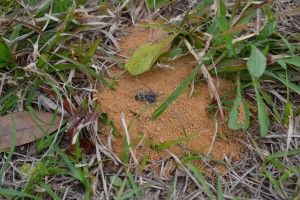
by Beth Bolles | Mar 28, 2016
The mining bees or adrenids are often seen in areas of landscapes that have little ground vegetation and loose soil. After mating, the female bee will excavate a very small tunnel in the ground that has several small cells attached to it.
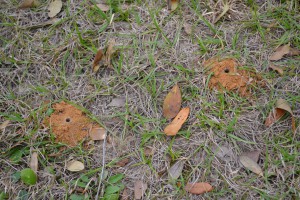
Beneficial solitary bee mounds in the ground. Photo by Beth Bolles
The bee collects pollen and nectar to add to the cell and then lays a single egg in each cell. The emerging larvae feed on the nectar and pollen until it changes to an adult bee in the fall. There is only one generation a year. Although these solitary bees individually produce small nests, sometimes many will nest in close proximity to each other.
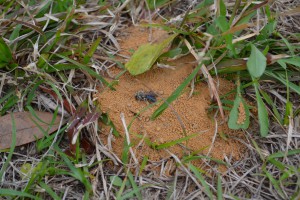
Solitary bee entering ground. Photo by Beth Bolles
Solitary bees are not aggressive and stings are quite mild. Most solitary bees can be closely observed and will elicit no defensive behaviors. Perhaps the most common stings that occur are when the sweat bee, which is attracted to moisture, stings when swatted. Males of some solitary bees, which can not sting, will sometimes make aggressive-looking bluffing flights when defending a territory.
Like the most famous honey bee, solitary bees play a beneficial role in the pollination of plants. Their activity in the spring is short-lived and no management is necessary.
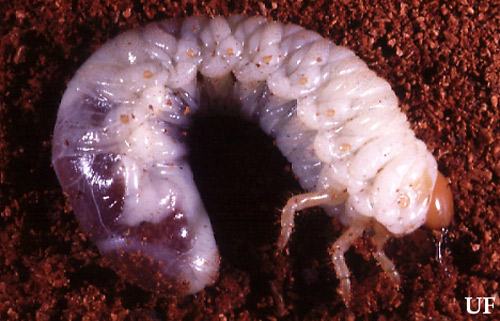
by Beth Bolles | Mar 2, 2016
A common question about insects when cold temperatures arrive is whether or not the cold will kill many pests. Although temperatures will occasionally drop below freezing in north Florida, it is normally not cold enough to significantly impact insect populations for the upcoming year.

Typical white grub of the genus Phyllophaga. Photograph by John L. Capinera, UF
Even when we do receive a significant amount of cold weather, insects have many methods to survive weather changes. Some insects survive by moving to micro-habitats that are more resistant to temperature fluctuations. Beetle larvae may move deep in the soil or into logs and trees for protection. The grubs can continue feeding on decomposing material throughout winter months. Beneficial insects such as dragonflies and damselflies stay protected in their nymph forms in the mud of ponds and lakes.
One of the most famous insect survival strategies is migration. We are all familiar with the late summer and fall flights of the monarch butterfly to warmer regions of Mexico and southern California. Those butterflies and moths that do not migrate have their own survival techniques. They will overwinter in protective pupal cases to emerge as adults in the spring. Moth cocoons are spun of silk and may be composed of multiple layers, making them a good protection for the transforming insect.
Insects are adapted for survival and can live through far colder winters than we experience. Even though our cold weather will not drastically change insect populations, periods of cold will at least slow down their activity enough for us to enjoy a break from many pest worries.
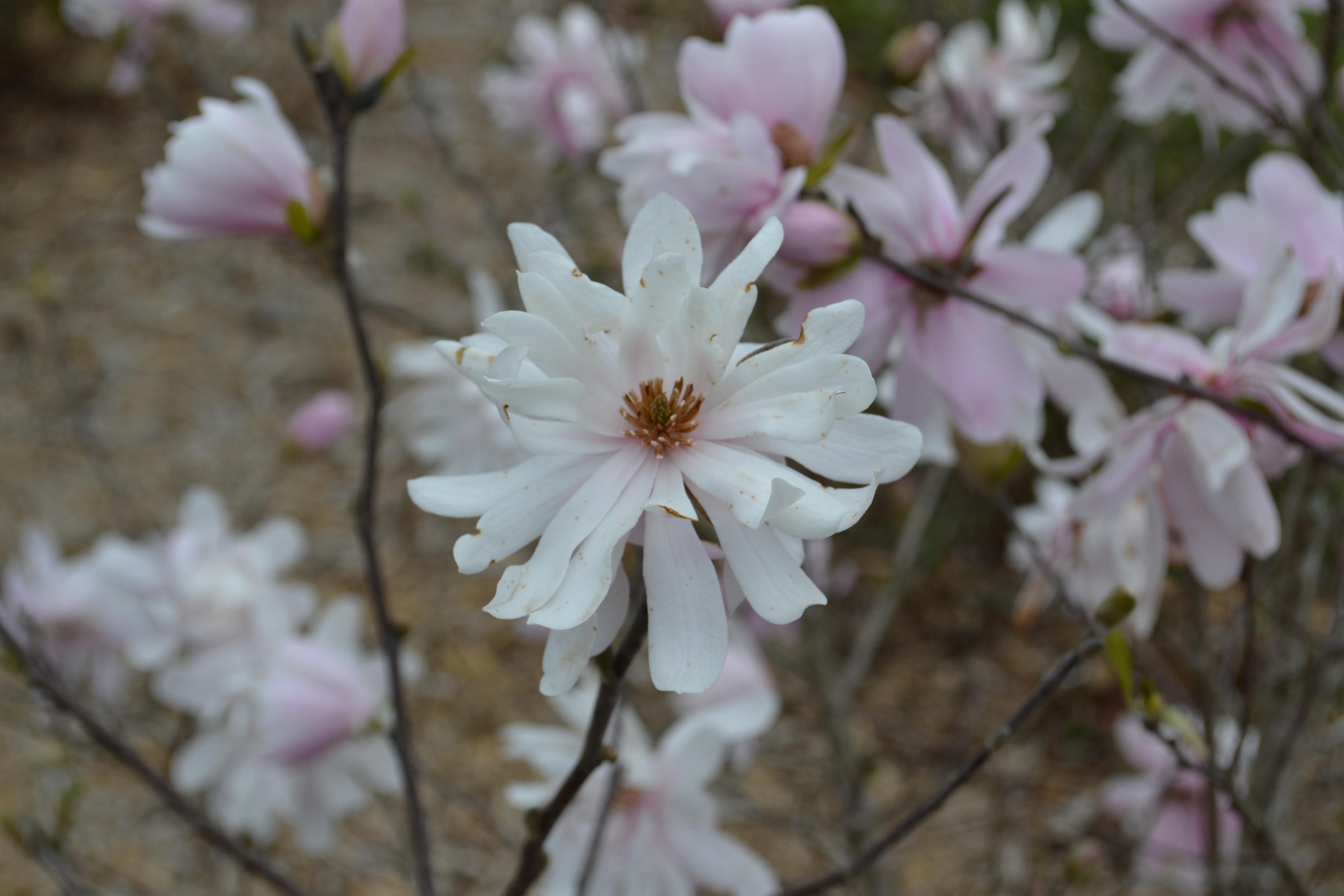
by Beth Bolles | Feb 24, 2016
Magnolias are well known plants to gardeners and many are familiar with the foliage and flowers of these plants. If you are looking for another earlier bloomer, you may want to consider adding a specimen selection to your landscape, the Star magnolia (Magnolia stellata).
Although not native to the United States, star magnolia is a slower growing multi stemmed deciduous shrub reaching about 15 feet in height over time. The best feature are the bright whitish pink star-shaped blooms appearing in late winter before leaves emerge. The flowers offer gardeners a peek of the spring to come and remind us that our Gulf Coast winters are not that long. 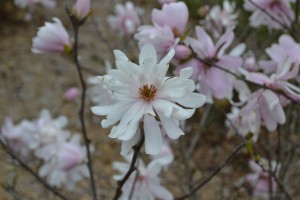
Plants do best in soil with some organic amendments and mulch over the root systems. A planting area that receives a little afternoon shade is ideal but established plants will adapt to sunnier locations when irrigation is provided during drier weather. Only occasional pruning is required to remove crossing branches or those that grow out of bounds. Prune after flowering if needed.
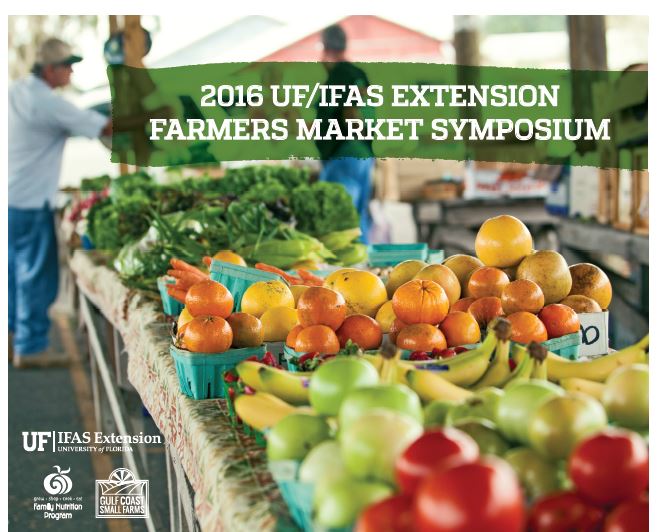
by Beth Bolles | Feb 10, 2016
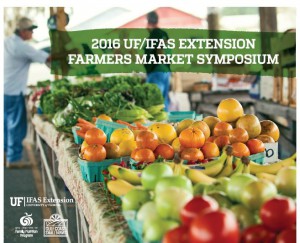 On Tuesday, March 8, 2016, UF/IFAS Extension Escambia County will hold a Farmers Market Symposium from 8:30-3:30. The meeting will take place at the Langley Bell 4-H Auditorium, 3730 Stefani Road Cantonment FL 32533.
On Tuesday, March 8, 2016, UF/IFAS Extension Escambia County will hold a Farmers Market Symposium from 8:30-3:30. The meeting will take place at the Langley Bell 4-H Auditorium, 3730 Stefani Road Cantonment FL 32533.
EDUCATIONAL SESSIONS INCLUDE:
• Overview of Florida Farmers Markets
• Starting a Community Garden
• Best Practices at Farmers Markets
• Food Safety Guidelines for Growers and Vendors
• Multiple Payment Options for Farmers Markets
• Cottage Food Laws
• Marketing Opportunities
• Food Safety at the Farmers Market
• Additional Optional Session: Farmers Market Nutrition Program Training for any interested vendors
Lunch and refreshments will be provided. The cost is $15 for pre-registration, $20 at the door. REGISTER ONLINE at http://tinyurl.com/IFAS-Farmers-Market-Symposium
For more information, contact Christina Walmer at cbwalmer@ufl.edu or by phone at 850.475.5230
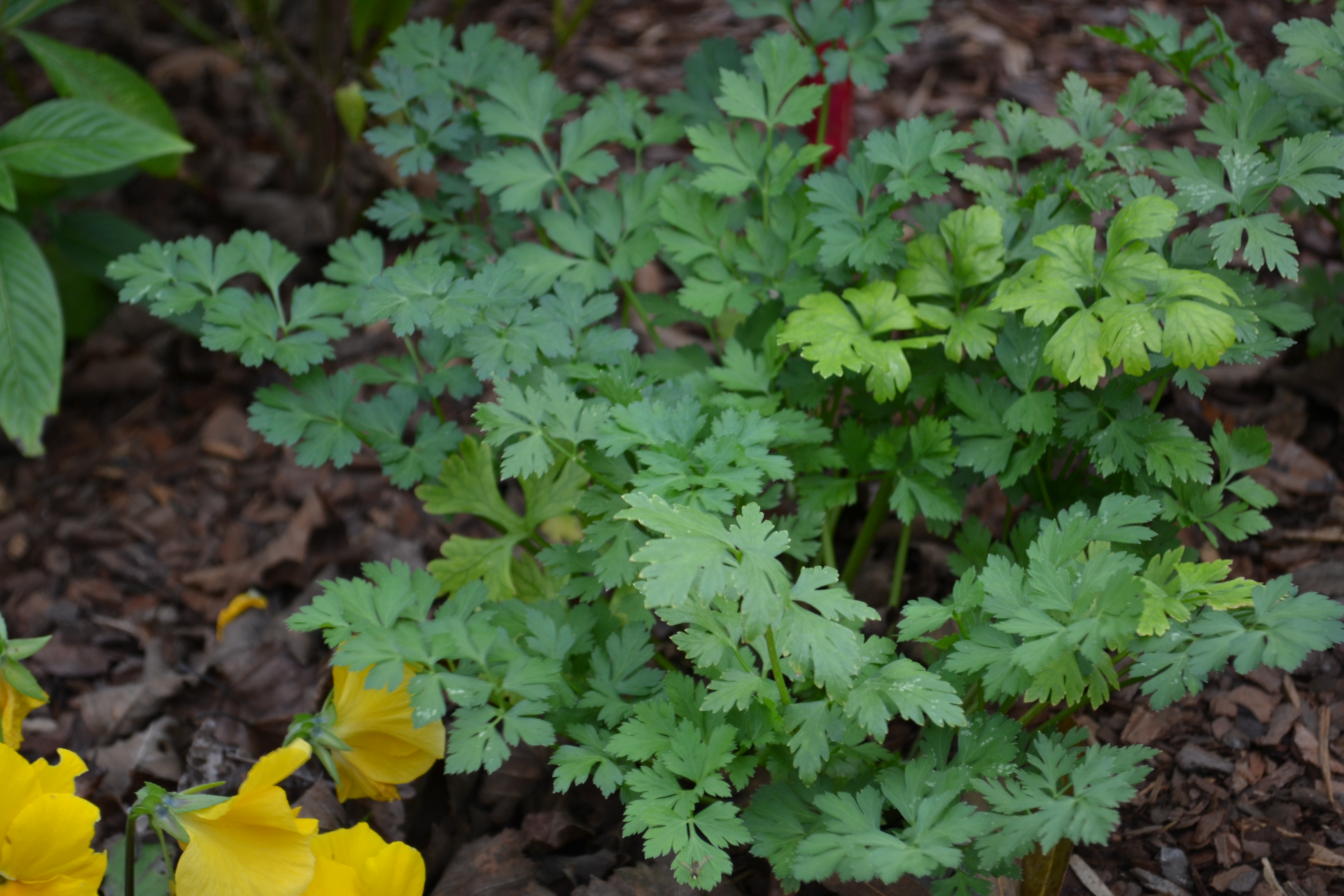
by Beth Bolles | Jan 27, 2016
Parsley is one of the most well-known herbs, and if you missed the fall planting, there is still time to choose a preferred selection for late winter/spring planting.
An herbaceous biennial, parsley is an easy herb for containers or small garden spaces. You may purchase a small pot at the nursery or grow from seed. Realize that seeds do best when soaked in warm water for 24 hours prior to planting and may not germinate for several weeks. Be sure to mark the area well so you remember not to overplant with another herb or vegetable.
Choose an area or soil that allows for good drainage and full sun in the cooler months. During the heat of summer, parsley does prefer a little break from afternoon sun. Consider planting in pots so plants can be moved during the hottest months. Plants will prefer water during times when rainfall is lacking, but the taproot does allow the plant to survive some drought.
There are different types of parsley you may choose but the most common types sold in stores are the curled leaf parsley and the Italian parsley. The Italian parsley has a stronger flavor and holds up a little better during cooking.
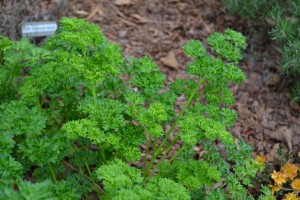
Curled leaf parsley
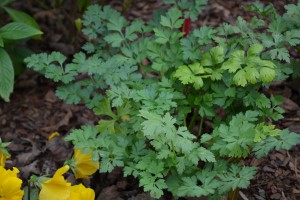
Italian parsley
Parsley is an attractive plant as a garden border or in a mixed container but will likely have a visitor during the warmer season that will feed on the leaves. The black swallowtail butterfly will use parsley as a host plant so plant enough to share with the butterflies.











